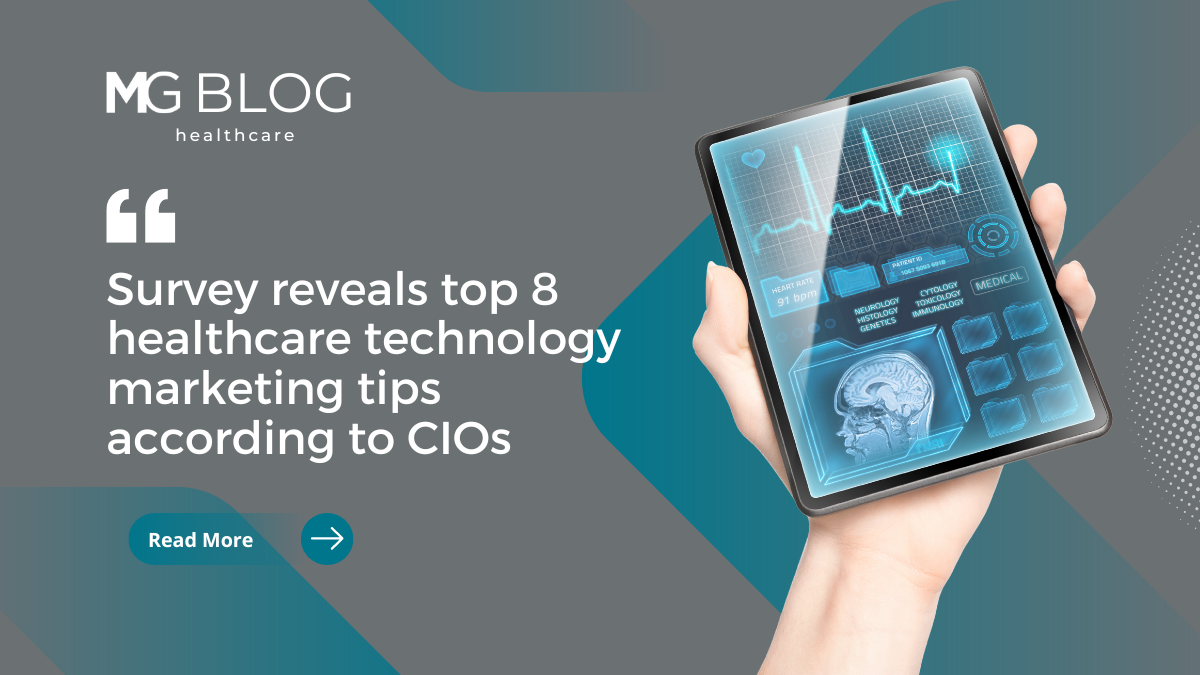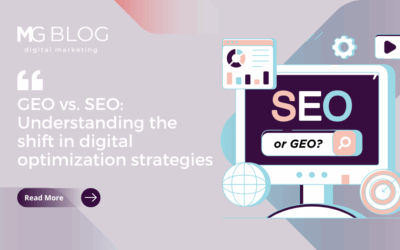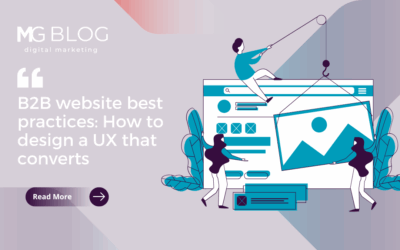
For many healthcare technology marketing and PR practitioners, their number one goal is to capture the attention of chief information officers (CIOs) at healthcare organizations. While this has always been a challenge, digital transformation has led to an even more crowded healthcare technology market — and it is becoming more and more difficult to stand out.
Merritt Group’s Healthcare Practice set out to help other healthcare technology marketers work more effectively to get their company in front of key healthcare decision-makers. In order to do that, we created a survey to get into the minds of CIOs, understand more about their purchasing decisions, and uncover how marketing efforts affect them. You can see a preview of our findings below, and check out our Healthcare Marketing Guide for more results, insights, and tips you can start using today.
View Survey Results1. Events are still a powerful way of getting in front of CIOs. In the survey, the majority of healthcare CIOs (75%) said that they prefer getting information about vendors from events — a surprising response given the major rollback of events during COVID-19. Anecdotally, we have also heard that many events held since COVID-19 are not reaching the same scale and having the same impact they used to. Despite that, CIOs still find it to be an important element of their purchasing decisions, so marketers must keep that in mind. In order to maximize their presence at today’s events, marketers must make more careful decisions to maximize results. Be sure to screen event attendee lists first to ensure you’re reaching the right audiences, not just rely on past event reputation. A great way to dip your toe in the water is to pursue a speaking opportunity — often events will pay for speakers to attend, so it is a great way to do some groundwork and see if the event is worth investing for the future. Finally, be sure to have a solid nurture program in place to capture attendees at the event to feed the funnel for your sales team.
2. Media/news coverage reign supreme as the biggest market forces for influencing buying decisions.When asked about which market forces drive buying decisions, 70% of respondents answered with the media. Interestingly, this contradicts a previous survey response in which CIOs ranked the news as their last source of information for new healthtech products/vendors at 15%. This points to the fact that CIOs aren’t looking to the media for healthtech vendors touting their solutions. Instead, they turn to the media for the seismic trends that will affect their business and patients. Healthcare technology vendors should focus on producing thought leadership content on these trends to educate the media and position themselves as trusted sources. This also has the added benefit of showing CIOs how the healthcare technology vendor’s solution can help solve tough challenges. This sort of “awareness” strategy, along with a targeted digital marketing approach, can help yield positive results.
3. Most CIOs get healthcare news from health trades, medical journals, and national/business outlets. While 80% of CIOs get their news from each of those channels, interestingly, podcasts and social media ranked much lower at 20% and 40% respectively. This should not discourage marketers from pursuing these new/emerging channels, though – we know that it takes time for these things to catch on. Rather, it’s important that traditional and foundational marketing strategies not be neglected in the pursuit of these new channels and trends.
4. CIOs are heavily influenced by key opinion leaders (KOLs) and industry leaders when it comes to purchasing decisions. While marketers are often focused on getting directly to the source (CIOs), we cannot underestimate the value of KOLs and industry influencers – 90% of CIOs say they are influenced by them. It is crucial for marketers to spend time researching who those individuals are and strategize different ways to get in front of them.
5. When it comes to vendor content, CIOs prefer videos. While there has been great debate over the value of videos, we can now say that video’s time is finally here. 75% of CIOs say that they consume video content — making it the most common answer compared to case studies (65%), websites (60%), webinars (60%), social media (40%), and whitepapers/e-books (30%) in our survey results. For healthcare technology marketers, this speaks to the need for integrated PR, marketing, and content teams. Having consistent messaging across all channels is key — and having an integrated team will make the process much easier.
6. Cost-benefit/ROI messages go a long way for CIOs. Unsurprisingly, CIOs want to see the ROI before they invest in a product. And while this may seem like a given, ROI is something that many marketers take for granted – but marketers must remember to lead with this message whenever possible. For those marketers who do not have the ROI or cost message to share (for example, those working with newer companies that are still collecting the data), be sure to provide anecdotal evidence and supplemental information to demonstrate predicted ROI.
7. The majority of CIOs say that regulatory/reimbursability status is only somewhat important in purchasing decisions. While it’s important for marketers to communicate that information, it’s not the “be-all and end-all.” Marketers can still make an impact by demonstrating product roadmaps and the path to reimbursability in their messaging.
8. The top sources of internal conflict between CIOs and other stakeholders are cost and clinical validation. We’ve already discussed the importance of the ROI message to address this cost conflict, but marketers must also ensure they are messaging around clinical validation, too. While it can take a long time for newer healthtech companies to get this data, marketers can get creative when it comes to how they message around clinical validation. Patient and provider stories are one possible solution. However, marketers should position them as a supporting pillar to the ROI angle so that the stories don’t overshadow cost-benefit messaging altogether.
To learn more about how to reach health system CIOs and important considerations for your healthcare technology marketing strategy, please see our 2023 Healthcare Technology Marketing Guide.



